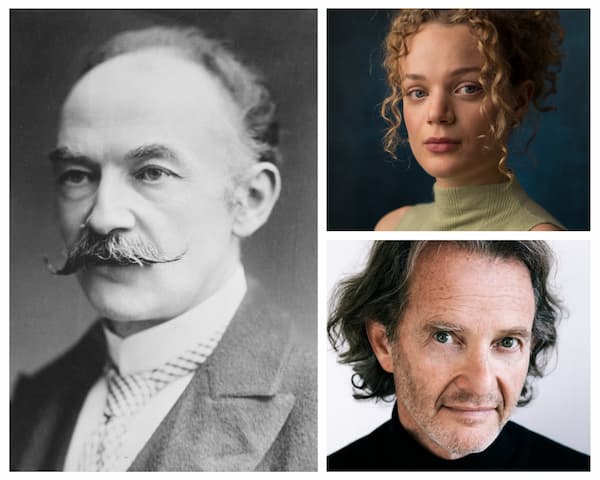Greek National Opera ended its season with Tosca, given outdoors at the Odeon of Herodes Atticus amphitheatre, located under the Acropolis wall. The stage is unusual in that it’s wide but not very deep, there are no wings, and the entry doors are narrow arches. One design decision that was particularly unfortunate was the large cross angled across the stage.
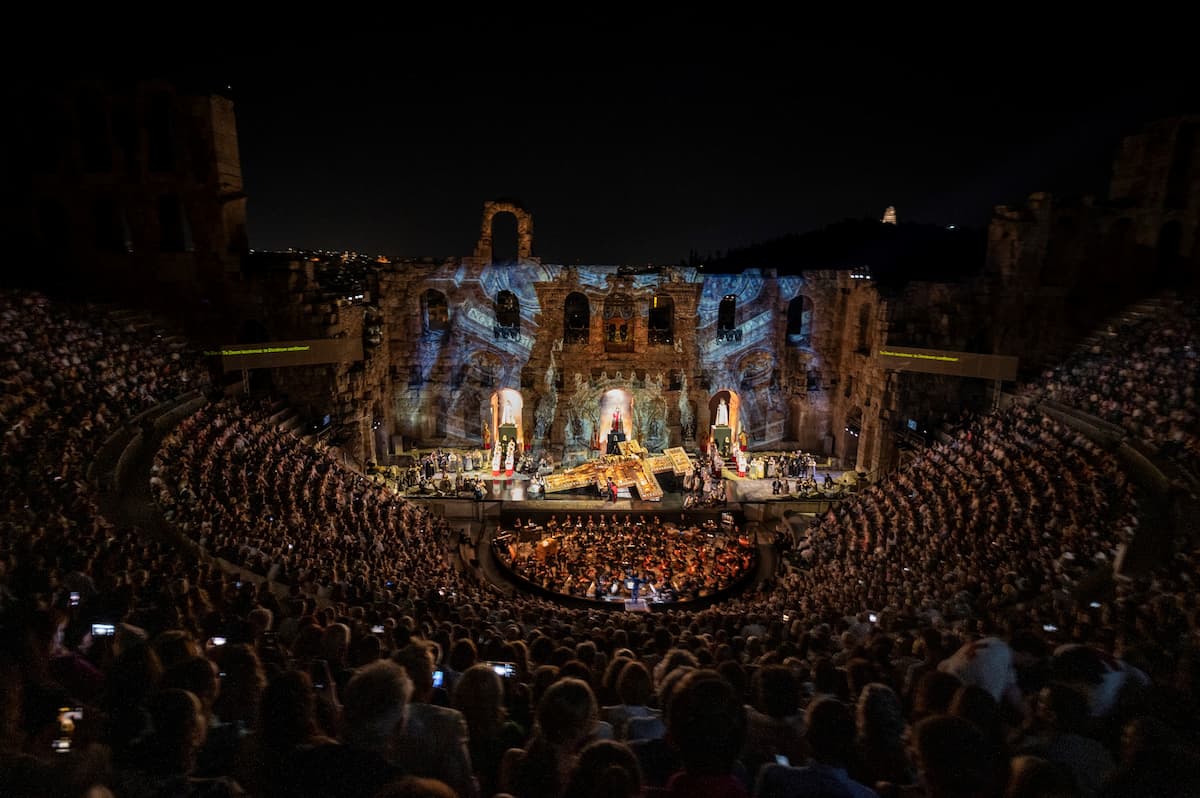
Act I
Huge, dramatic, but used throughout the first act as a place to hide things, seats for the characters, a place to put clothing and handbags, etc. All in all, a most blasphemous use of a cross, particularly in a church setting, namely Sant’Andrea della Valle.
The huge crucifix continues to cause problems in Act II, after the base is pulled apart, and Christ is stacked against the back wall, awkwardly blocking an archway, and in the final act, where he completely blocks half the stage. It had the effect of shrinking the site for the action, but its problems quickly became apparent when half the French army was stranded on one side of the cross taking bows, and the rest of the cast was on the central stage.
The original set design was by Hugo de Ana. De Ana is famed for his use of spectacular sets and this one, perhaps, would have worked better on a standard opera stage.
Unfortunate design decisions aside, the production was well-placed on the stage. The Odeon of Herodes Atticus, locally known as the Herodeion, was built in 161, destroyed in 267, and renovated in 1950.
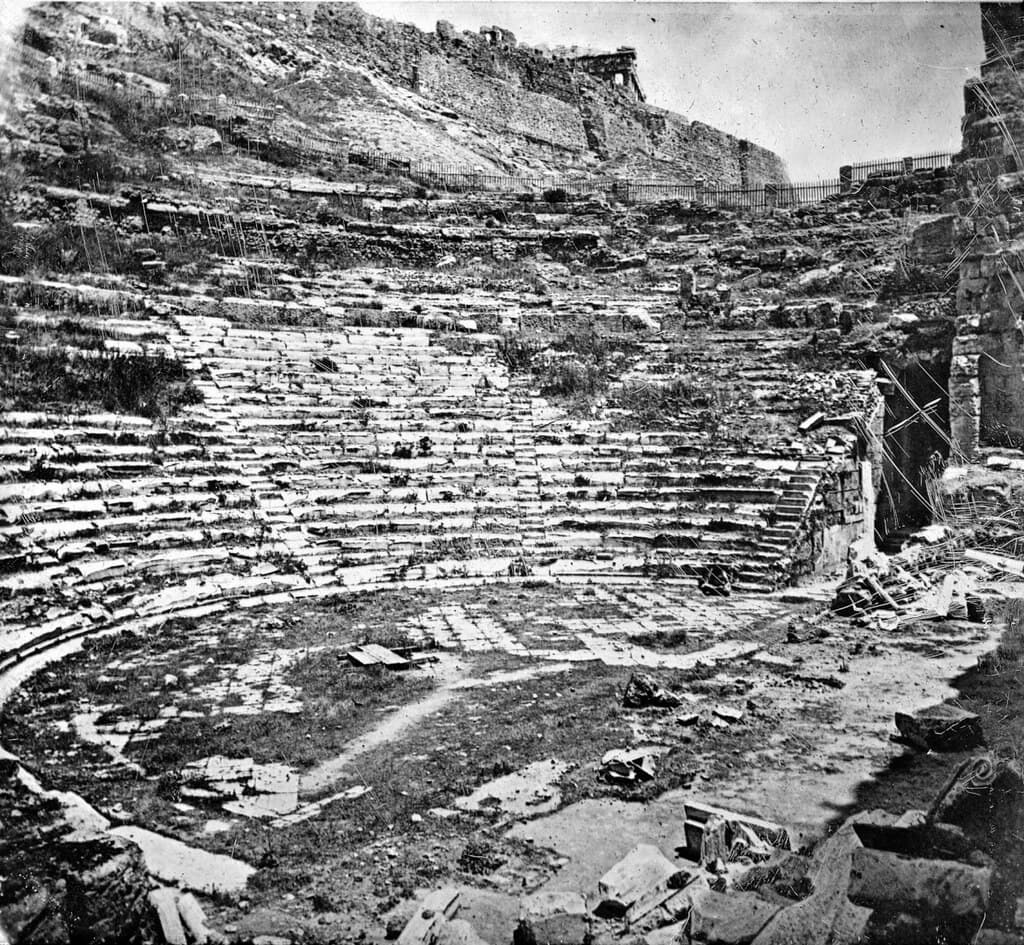
Odeon of Herodes Atticus in 1880 (note corner of Parthenon at upper right) (Brooklyn Museum)
The seating has been restored, but the original three-story stone front wall has been stabilized and left unchanged, except for modern access points added behind it.
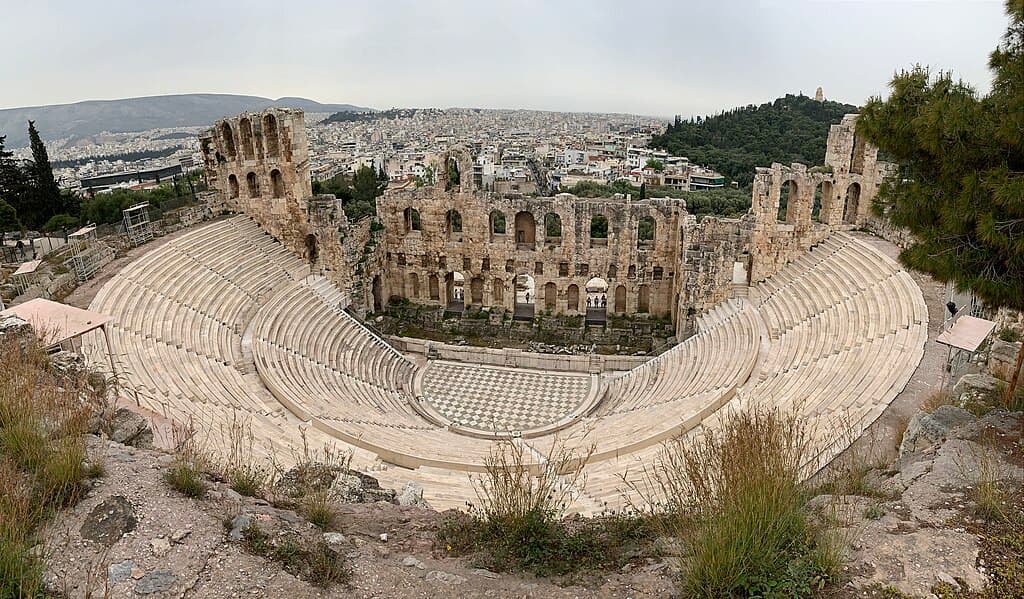
Odeon of Herodes Atticus in 2019, taken from the Acropolis (Photo by Salvador Calyso)
It’s a frighteningly vertical theatre but the result is that there are no dead spots, no non-viewing seats, and very good acoustics. GNO used the back wall for projections, created by Sergio Metalli and Ideogamma SRL. In the Act I design, above, the projection was the interior of the basilica – sometimes the ceiling and sometimes the dome.
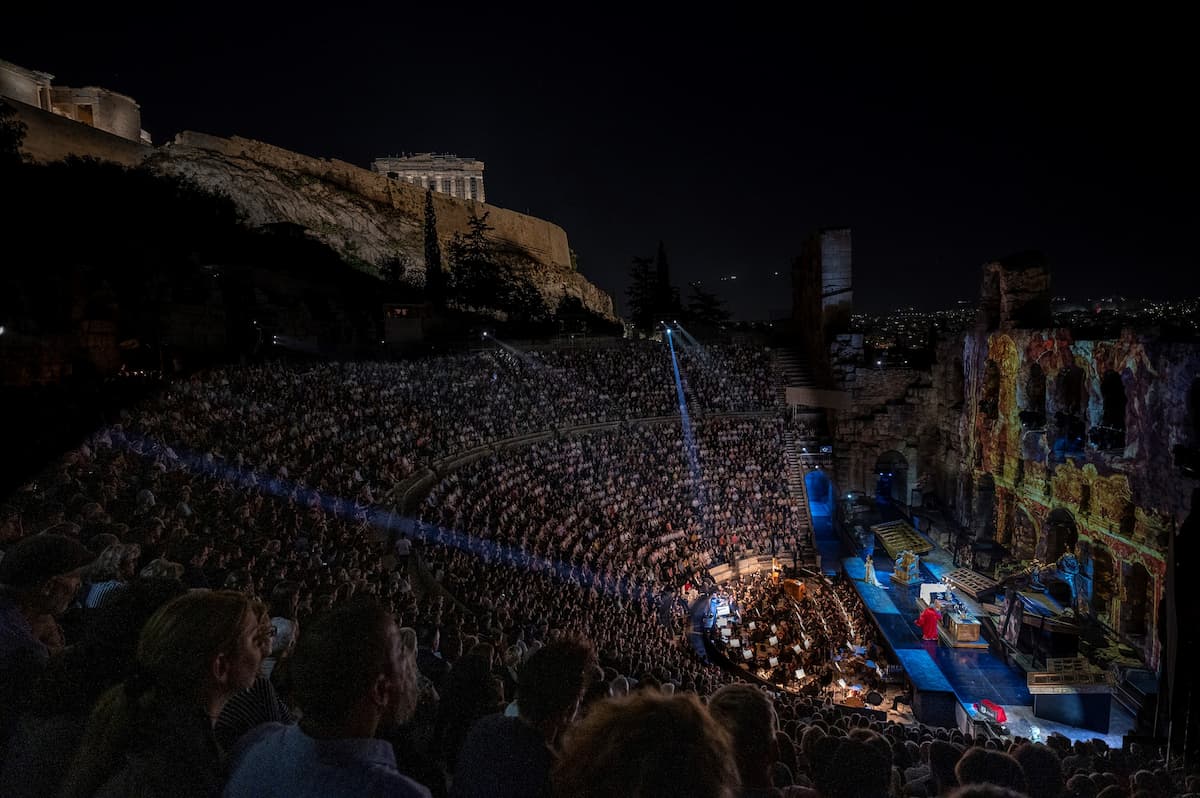
Act II
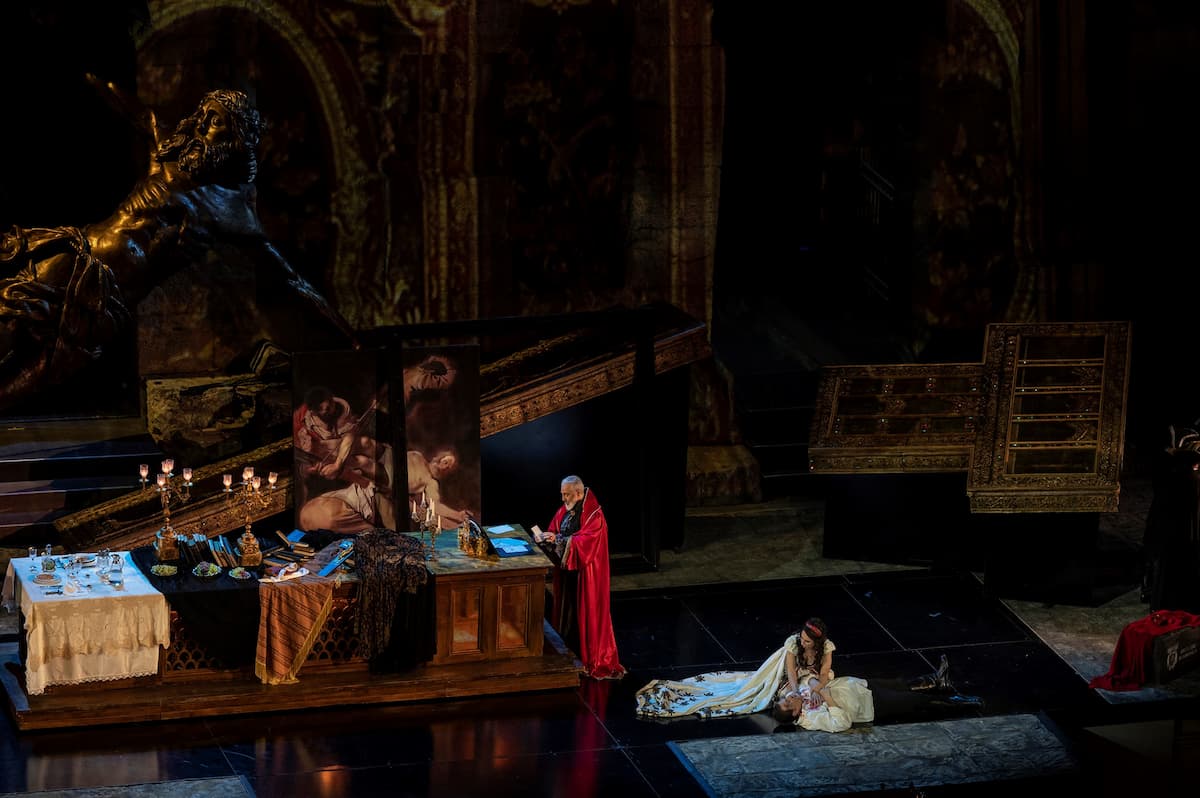
Act II: Tosca comforting Cavaradossi
In Act II, it was the art on the walls of Baron Scarpia’s office. In Act III, it was the Castel Sant’ Angelo, sometimes inside and sometimes exterior shots that included the statues by Bernini and others on the Aelian Bridge leading to the Castel Sant’Angelo. When Tosca makes her final exit, the projections changed to a floating scarf, as seen at the beginning of this GNO video.
A performance of Tosca (Greek National Opera)
Outside singers were brought in for the roles of Tosca (Evgenia Muraveva and Cellia Costea) and Cavaradossi (Riccardo Massi and Carl Tanner), but the other roles, including Baron Scarpia, were by GNO regulars. Tassis Christoyannis as Scarpia was particularly menacing, swirling around in his black clothes and brilliant scarlet cloak.
The GNO Chorus wasn’t up to its usual standard in Act I – the breadth of the stage may have been a problem, but they certainly weren’t singing together very well or with the orchestra, particularly in the Te Deum.
The orchestra, under Lukas Karytinos, was in an especially exposed position, since it’s not possible to have a pit under the stage for the musicians. They played as beautifully as they always do, and it was a treat to be able to hear them so clearly as well as watch them.
Russian soprano Evgenia Muraveva, as Tosca, was uneven. Her ‘Vissi d’arte’ lacked the pensive, questioning quality that so many other sopranos have brought to work. Yet, she was completely believable as the beautiful, frivolous, jealous soprano, particularly in Act I.
Italian tenor Riccardo Massi was an impressive Cavaradossi, capturing the complex life of a painter with political leanings. His final act aria, ‘E lucevan le stelle’, was an outstanding performance. What was curious were his actions when Tosca gives him their safe-conduct pass from Scarpia. He seems to not believe that it’s true and crumples the document and puts it in his pocket – an unusual reading of the part.
The opera ends with death: first Scarpia’s, then the prison escapee Angelotti’s, then Cavaradossi, and then Tosca’s suicide. A true tragedy.
Tosca at the Odeon of Herodes Atticus
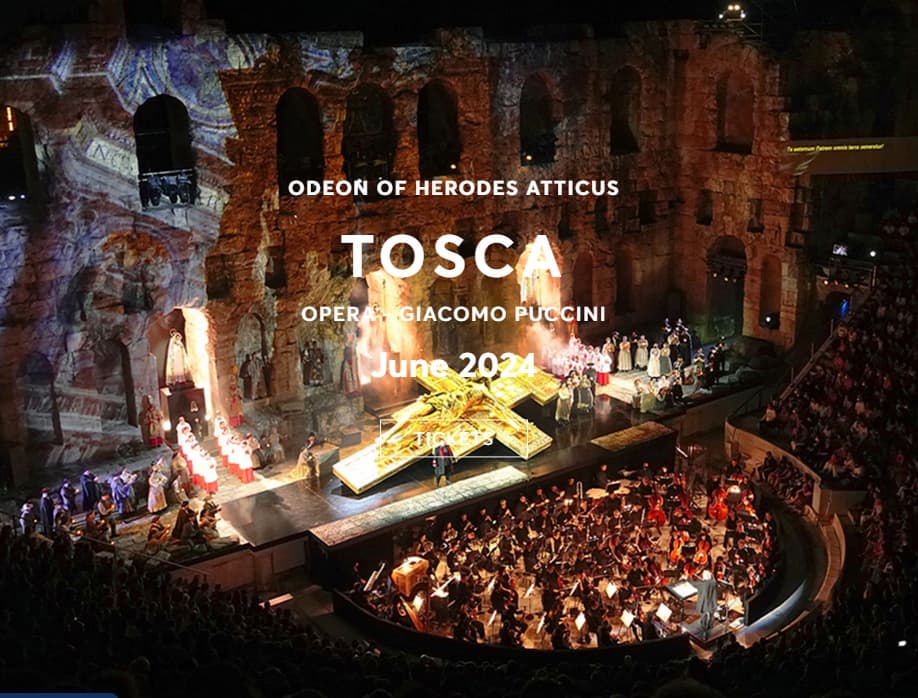
GNO Website
Greek National Opera
Puccini: Tosca
June 1, 2, 4, 6, 11 at 9 pm, Odeon of Herodes Atticus
For more of the best in classical music, sign up for our E-Newsletter

